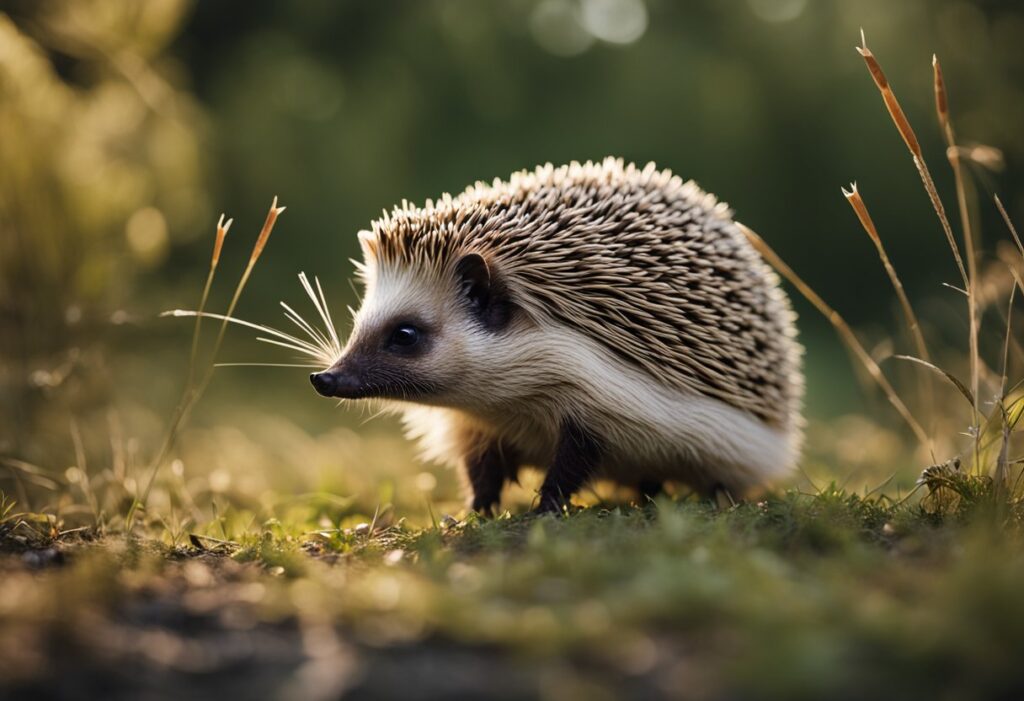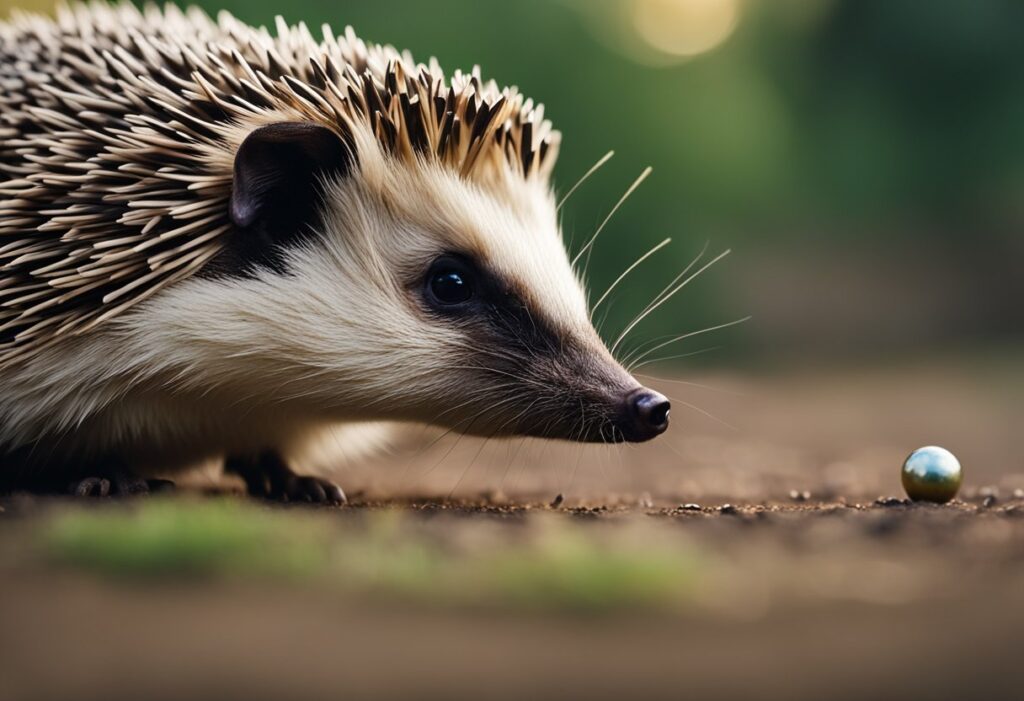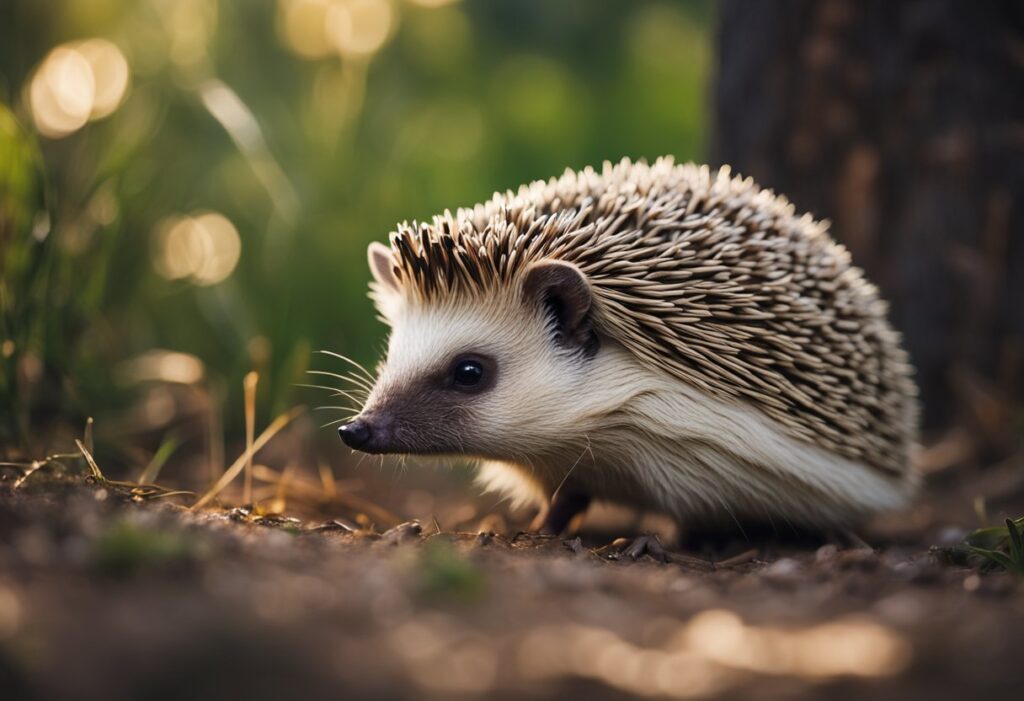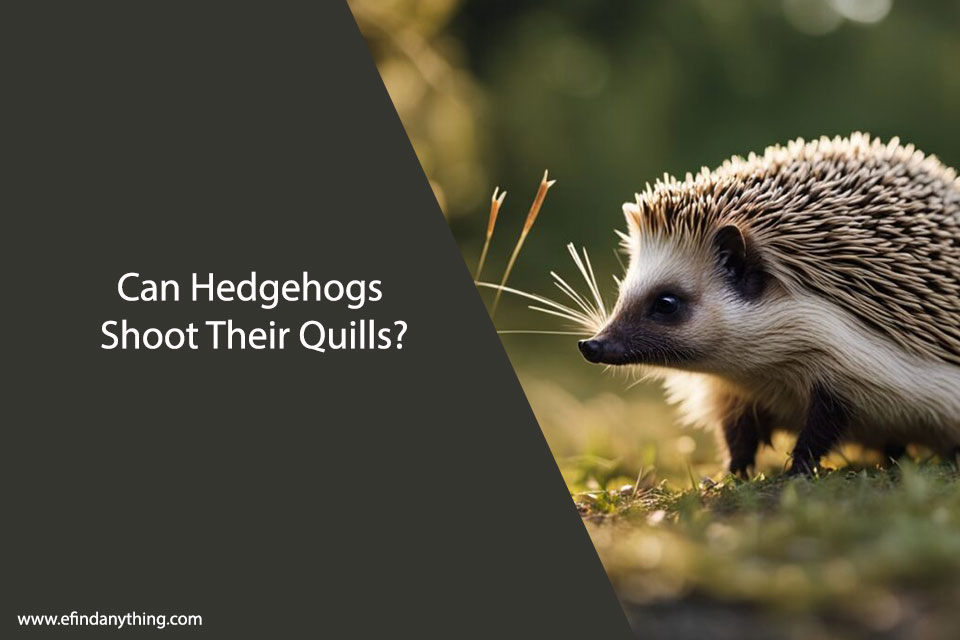Hedgehogs are fascinating creatures that have captured the hearts of many animal lovers. With their adorable faces and prickly spines, it’s no wonder people are curious about their unique features. One question that often comes up is whether hedgehogs can shoot their quills.

The answer is no, hedgehogs cannot shoot their quills. Quills are modified hairs that grow from the hedgehog’s skin and are used for defense against predators. When threatened, a hedgehog will curl into a tight ball, exposing only its spines to deter predators. However, the quills are not projectiles and cannot be launched from the hedgehog’s body.
While hedgehogs cannot shoot their quills, they do have other interesting behaviors related to their spines. For example, when a hedgehog is feeling relaxed or comfortable, it may lower its spines to lie flat against its body. On the other hand, if a hedgehog is feeling threatened or scared, it may raise its spines to make itself appear larger and more intimidating. Understanding these behaviors can help us better appreciate and care for these unique animals.
Table of Contents
Hedgehog Quill Basics

Hedgehogs are well-known for their spiky quills, which they use for defense against predators. In this section, we will explore the anatomy and function of hedgehog quills.
Anatomy of Quills
Hedgehog quills are modified hairs that are made of keratin, the same material that makes up human hair and nails. They are hollow and have a tapered shape, with a sharp tip at the end. Quills grow from hair follicles embedded in the skin and can be up to 3 cm long.
Hedgehogs have around 5,000 to 7,000 quills on their body, which are arranged in rows and can be raised or lowered by muscles in the skin. The quills on their back and sides are longer and more rigid, while those on their belly and face are shorter and softer.
Quill Function
Contrary to popular belief, hedgehogs cannot shoot their quills. Instead, they use them as a passive defense mechanism. When threatened, a hedgehog will curl into a tight ball, exposing only its spiky quills to the predator. This makes it difficult for the predator to attack the hedgehog without getting pricked.
In addition to defense, hedgehog quills also serve other functions. They provide insulation, helping the hedgehog regulate its body temperature. They also help with grip and balance, allowing the hedgehog to climb and move around on different surfaces.
Overall, hedgehog quills are a fascinating and important part of their anatomy. By understanding their structure and function, we can appreciate these unique creatures even more.
Hedgehog Defense Mechanisms

Hedgehogs are known for their unique defense mechanism of quills. However, there are many misconceptions about how hedgehogs use their quills to defend themselves. In this section, we will discuss the two main ways in which hedgehogs use their quills for defense: quill erection and quill detachment.
Quill Erection
Contrary to popular belief, hedgehogs cannot shoot their quills at predators. Instead, they rely on quill erection to make themselves look bigger and more intimidating. When a hedgehog feels threatened, it will curl into a tight ball, exposing only its spiny back. The muscles around the base of each quill contract, causing the quills to stand up straight and become more visible. This makes the hedgehog look like a prickly ball, which deters predators from attacking.
Quill Detachment
Another defense mechanism of hedgehogs is quill detachment. If a predator manages to get past the hedgehog’s quills and attack, the hedgehog will release some of its quills. These quills are loosely attached and will easily detach from the hedgehog’s skin, sticking into the predator’s skin. This causes pain and discomfort for the predator, making it more likely to back off and leave the hedgehog alone.
It is important to note that hedgehogs do not have an unlimited supply of quills and it can take several weeks for them to grow back. Therefore, hedgehogs will only use quill detachment as a last resort.
In summary, hedgehogs use quill erection and quill detachment as their primary defense mechanisms. While they cannot shoot their quills, they are still a formidable opponent for predators.
Common Misconceptions

When it comes to hedgehogs, there are many misconceptions about their quills. In this section, we will address two common myths about hedgehog quills: Quill Projection Myths and Self-Anointing Behavior.
Quill Projection Myths
One of the most common misconceptions about hedgehogs is that they can shoot their quills at predators as a form of defense. However, this is not true. Hedgehogs cannot shoot their quills at predators.
Hedgehogs use their quills as a defense mechanism by rolling into a tight ball, exposing their quills, and making it difficult for predators to attack them. The quills are not shot out of the hedgehog’s body, but rather they are passively released when the hedgehog is touched or attacked.
Self-Anointing Behavior
Another common misconception about hedgehogs is that they self-anoint by shooting their quills. Self-anointing is a behavior where hedgehogs will foam at the mouth and spread the saliva on their quills. This behavior is believed to help mask their scent and protect them from predators.
However, self-anointing has nothing to do with quill projection. The foam created during self-anointing is not shot out of the hedgehog’s body, but rather it is created within their mouth. The hedgehog then spreads the foam onto their quills using their tongue.
In conclusion, hedgehogs cannot shoot their quills at predators and self-anointing is not related to quill projection. It is important to understand the true nature of hedgehog quills in order to properly care for and appreciate these unique animals.
Hedgehog Handling and Care

Safe Handling Practices
When handling a hedgehog, it is important to approach them slowly and calmly to avoid startling them. We recommend using gloves or a towel to protect your hands from their quills. It is important to support their entire body, including their feet and head, to prevent injury. Never pick up a hedgehog by their quills as this can cause them pain and discomfort.
It is also important to note that hedgehogs are nocturnal animals, so they may be more active and alert at night. If you need to handle them during the day, it is best to allow them some time to adjust to the light before attempting to handle them.
Quill Loss and Health
Hedgehogs may lose their quills as a natural part of their growth cycle, but excessive quill loss can be a sign of an underlying health issue. If you notice your hedgehog losing an excessive amount of quills, it is important to take them to a veterinarian to rule out any health concerns.
Additionally, it is important to keep your hedgehog’s living space clean and free of any potential hazards that could cause injury or illness. This includes providing a clean and spacious cage, a balanced diet, and regular exercise.
In summary, hedgehogs require gentle and careful handling to prevent injury and discomfort. Monitoring their quill loss and overall health is important for their well-being. By providing a safe and clean living space, you can help ensure your hedgehog stays healthy and happy.
Scientific Observations
Research on Quill Properties
We have conducted extensive research on hedgehogs and their quills to determine if they can shoot their quills. Our observations have shown that hedgehogs cannot shoot their quills.
Quills are modified hairs that are made of keratin, the same material found in human hair and nails. Hedgehog quills are sharp and pointed, and they are used for self-defense. When a hedgehog feels threatened, it will curl into a ball, exposing its quills. However, the hedgehog does not shoot its quills.
We have found that hedgehogs have a specialized muscle that allows them to erect their quills, making them stand up straight. This muscle is called the arrector muscle, and it is attached to each quill. When the hedgehog is threatened, it contracts this muscle, causing the quills to stand up. This makes the hedgehog look larger and more intimidating to predators.
Comparative Analysis with Porcupines
We have also compared hedgehogs to porcupines, which are known for shooting their quills. Porcupine quills are much longer and thicker than hedgehog quills, and they have barbs on the end. When a porcupine feels threatened, it will shake its quills, causing them to detach from its body and fly towards the predator.
In contrast, hedgehog quills are shorter and thinner, and they do not have barbs. They are firmly attached to the hedgehog’s body and cannot be easily dislodged. Therefore, hedgehogs cannot shoot their quills like porcupines can.
In conclusion, our scientific observations have shown that hedgehogs cannot shoot their quills. While they can erect their quills to defend themselves, they do not have the ability to shoot them like porcupines.
Frequently Asked Questions
Do hedgehog quills function similarly to porcupine quills?
Hedgehog quills and porcupine quills are similar in appearance, but function differently. While porcupine quills have barbs that easily detach and stick into predators, hedgehog quills do not detach easily. Instead, hedgehogs use their muscles to raise and lower their quills, creating a barrier of sharp spines to protect themselves.
How do hedgehogs defend themselves?
Hedgehogs use their quills as their primary defense mechanism. When threatened, they will curl up into a tight ball, exposing their quills on all sides. They may also hiss, grunt, or make other noises to ward off predators.
Are hedgehog quills harmful to humans or predators?
Hedgehog quills can be harmful to predators, but are not typically harmful to humans. While the quills are sharp and can cause pain if stepped on or touched, they are not poisonous or venomous.
What is the composition of hedgehog quills?
Hedgehog quills are made of a protein called keratin, which is the same protein that makes up human hair and nails. The quills are hollow and have a tapered shape, with a sharp tip and a thicker base.
Can hedgehogs control their quills?
Yes, hedgehogs can control their quills using specialized muscles. When relaxed, the quills lay flat against the hedgehog’s body. When threatened, the hedgehog can raise its quills to create a protective barrier.
What differentiates hedgehog quills from porcupine quills?
Hedgehog quills are shorter and more numerous than porcupine quills. They are also not barbed, and do not detach easily. Additionally, hedgehogs have quills on their back and sides, while porcupines have quills on their back, sides, and tail.





